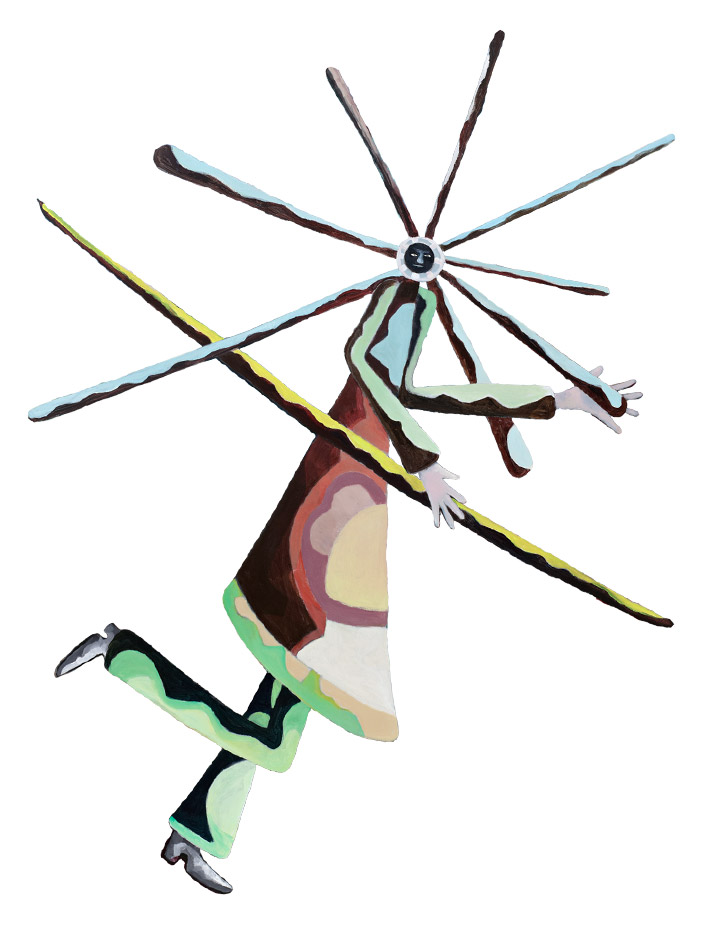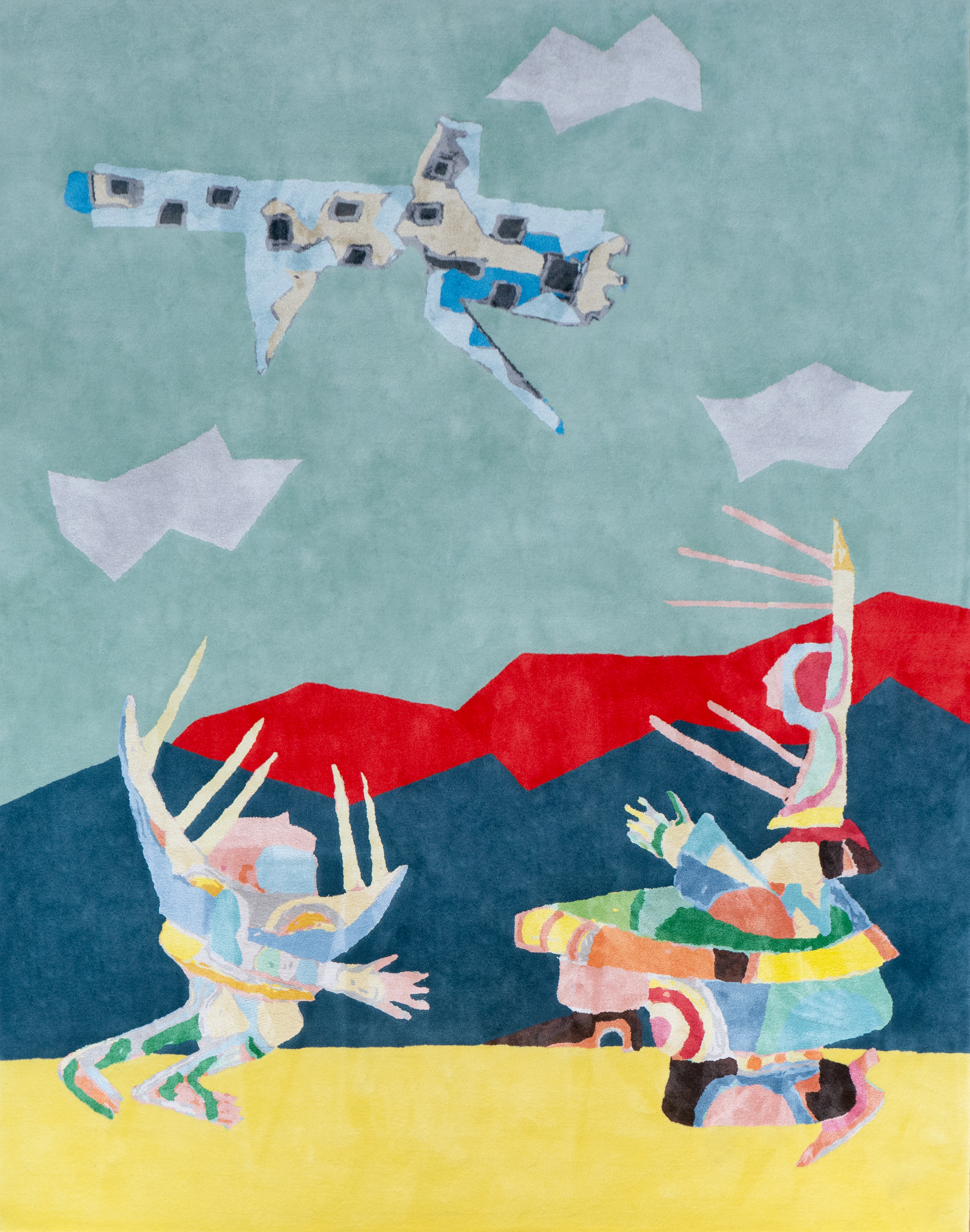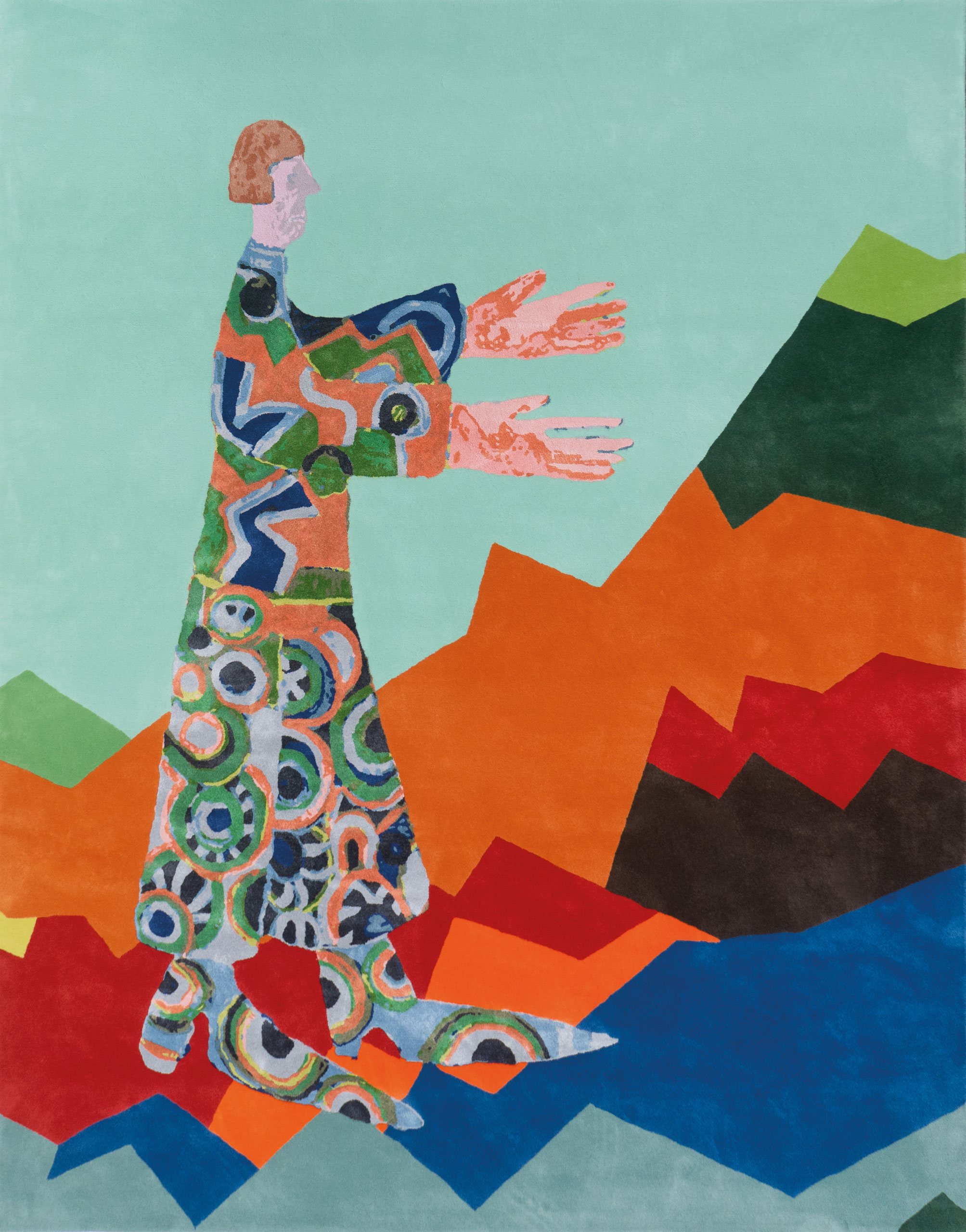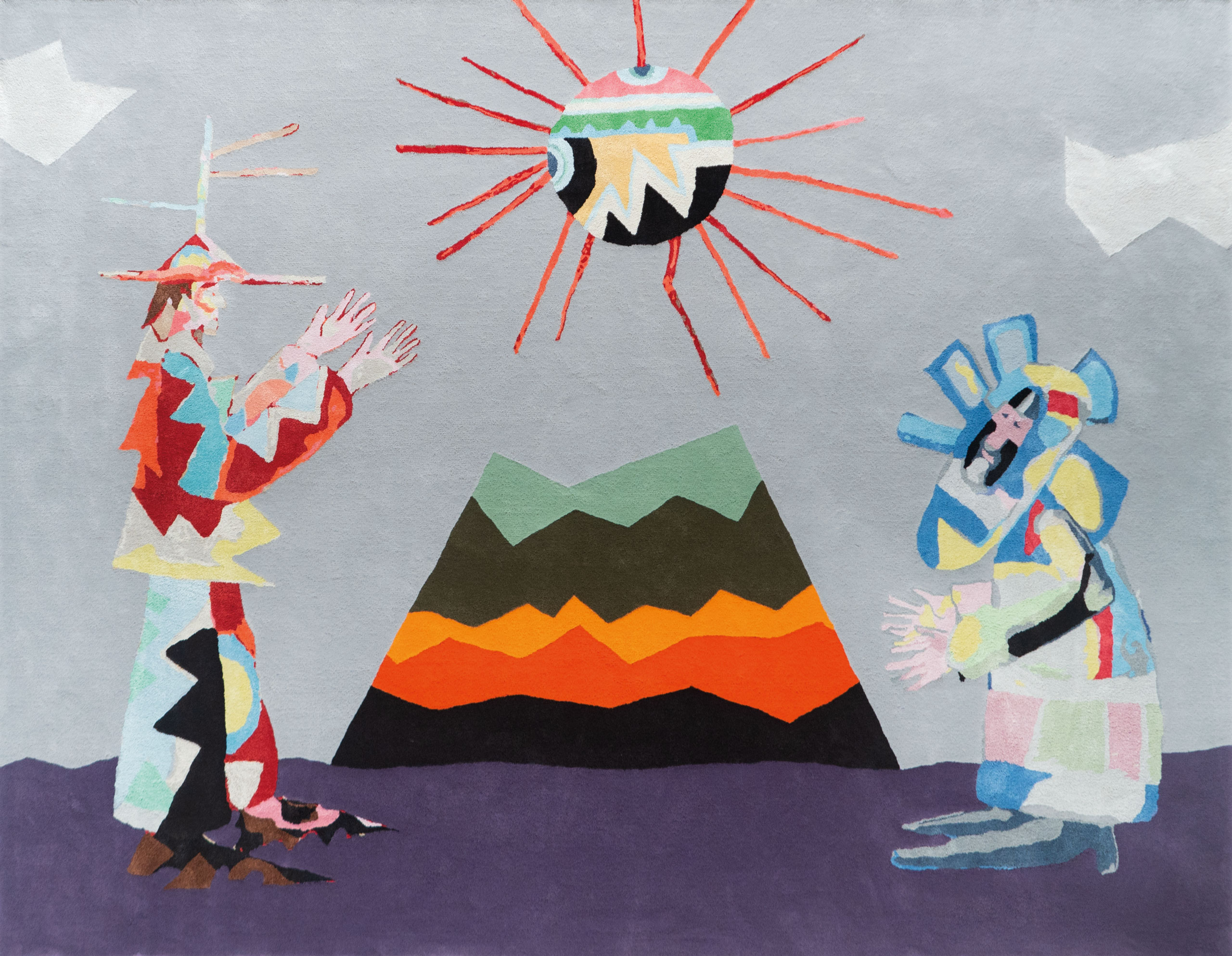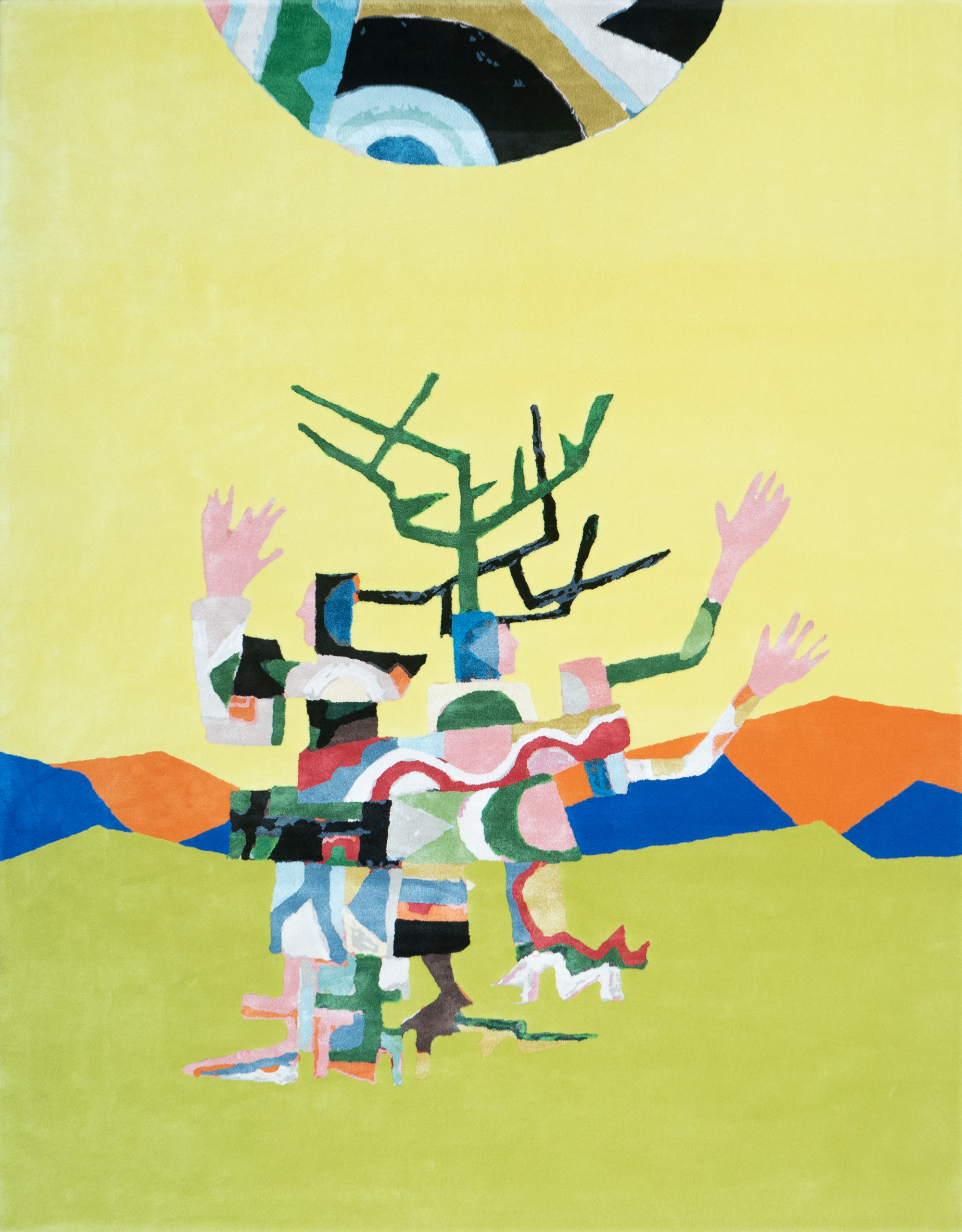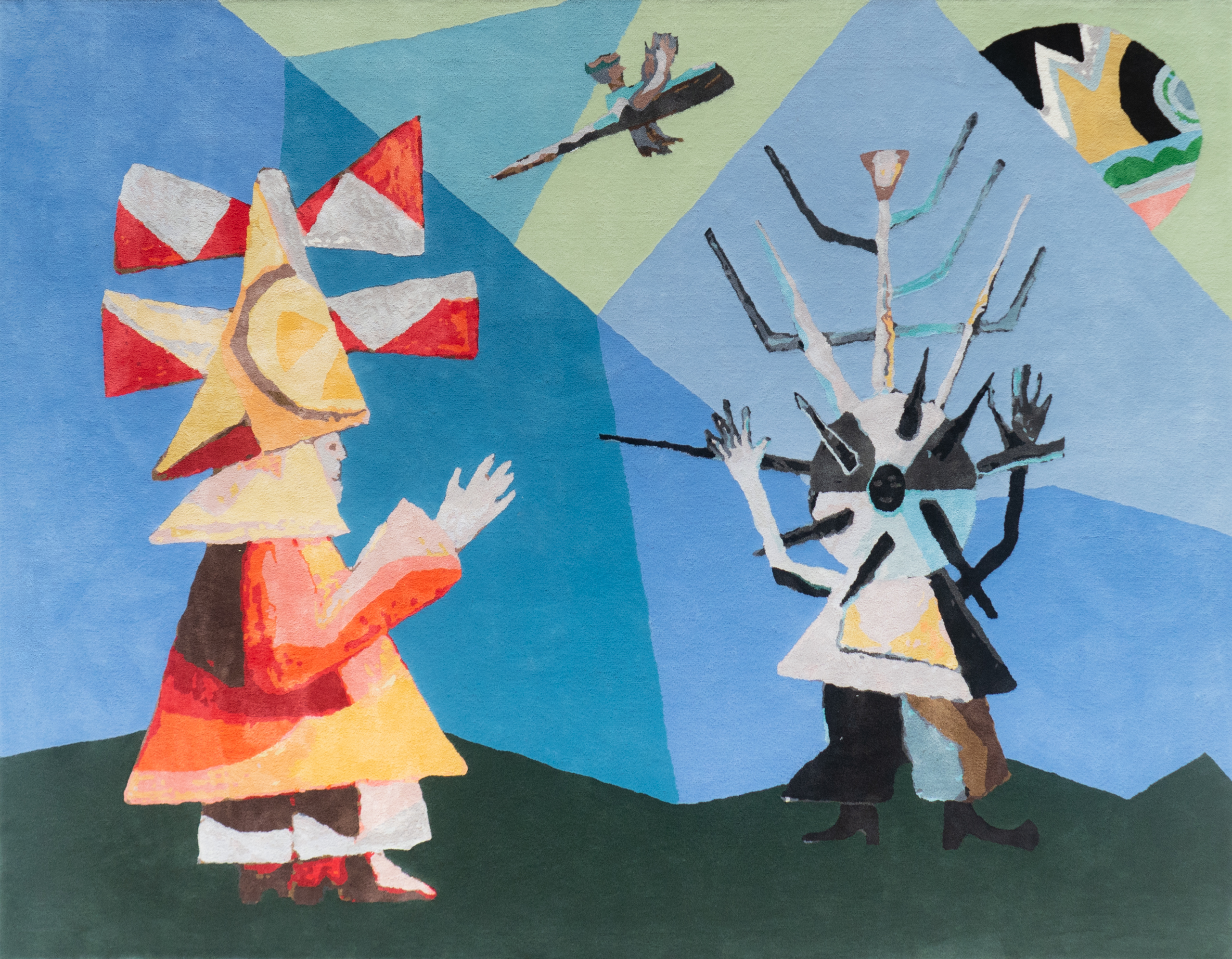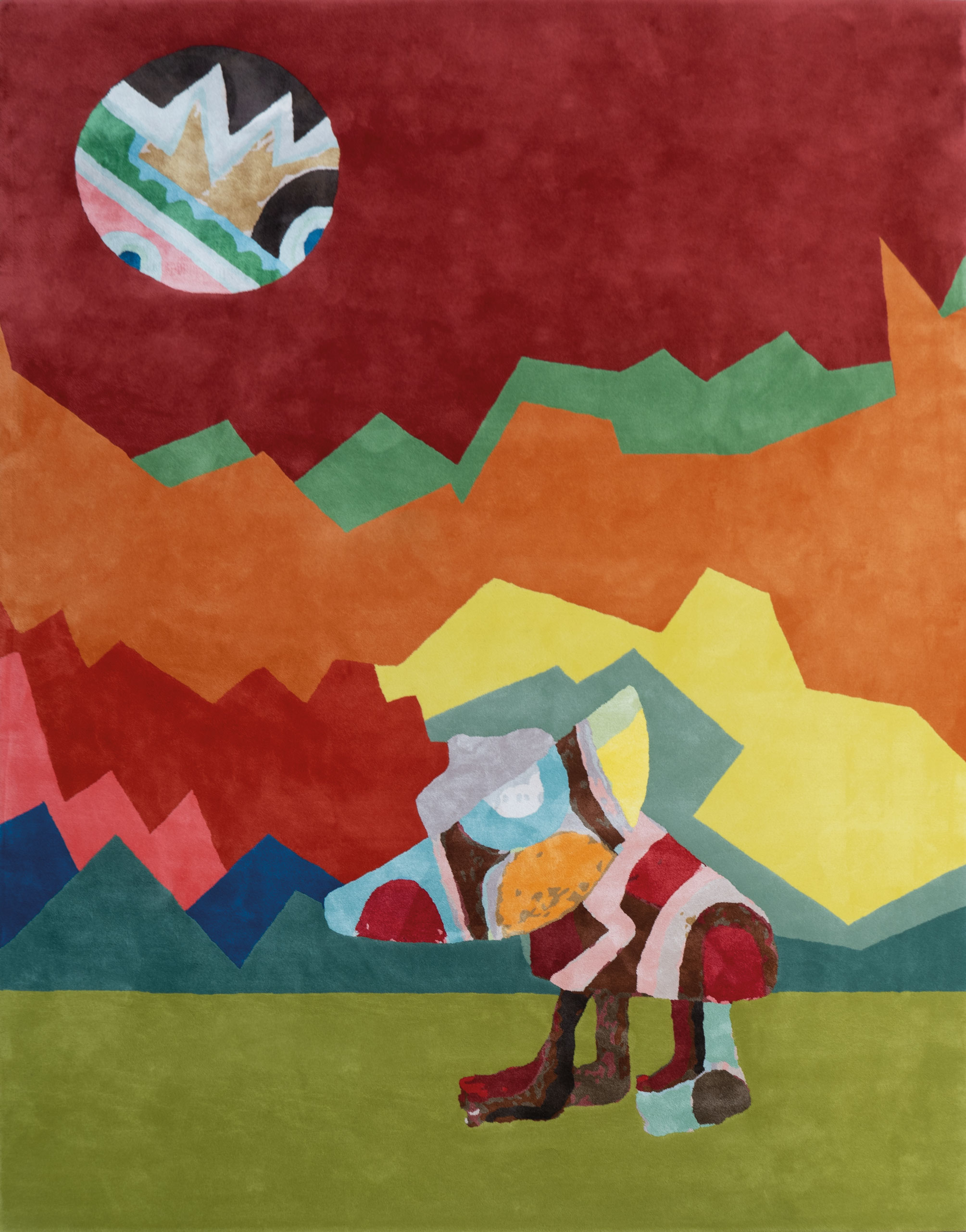Based on motifs from paintings by the painter Sebastian Heiner, the designer Michael Wruck has created a series of ten tapestries, which have now been made into carpets by the renowned textile company, JAB Anstoetz. Both artists are based in Berlin.
In 2018 Heiner created a series of oil paintings titled “Moloch City” in which he processed his impressions of the mega-cities Bangkok, Beijing and Shanghai into dystopian dream sequences centred on the confrontation between cubistically shaped high priests and aggressive, armed robots. Wruck takes the story one step further: weary of their chaotic surroundings and society as a whole, the colourfully clad figures devised by Heiner develop a yearning for other, more highly developed, extraterrestrial civilisations. After the high priest leader and some of his cohorts make contact, a spaceship lands. The earthlings, however, reject the “newcomers” and condemn them for their presumed superiority. The strangers then plan to depart. The intervention, however, of a high priestess to mediate leads to a mutual exchange of ideas and a realisation that the aliens have always been present, opening up the possibility of a higher development of humanity. In this last scene, the spaceship hovers above as a mechanical moon shines. Inspiration for the story was provided by the science fiction literature of Stanisław Lem, the brothers Arkadi and Boris Strugatsky, as well as the Chinese author Liu Cixin.


